
Thyme is the herb (dried aerial parts) of some members of the genus Thymus of aromatic perennial evergreen herbs in the mint family Lamiaceae.
It is known for the aroma and flavour of its dried leaves and flowering tops.
Thyme is a small low-growing shrub and is commonly cultivated as an annual, though it can persist as an evergreen perennial in warm climates. The stems are somewhat woody and bear simple leaves that are
oval to linear and arranged oppositely. The tiny tubular flowers are borne in whorls along the stems and are typically purple or white in colour. Bees are attracted to the flowers, and the thyme honey of Sicily has been famous for hundreds of years.
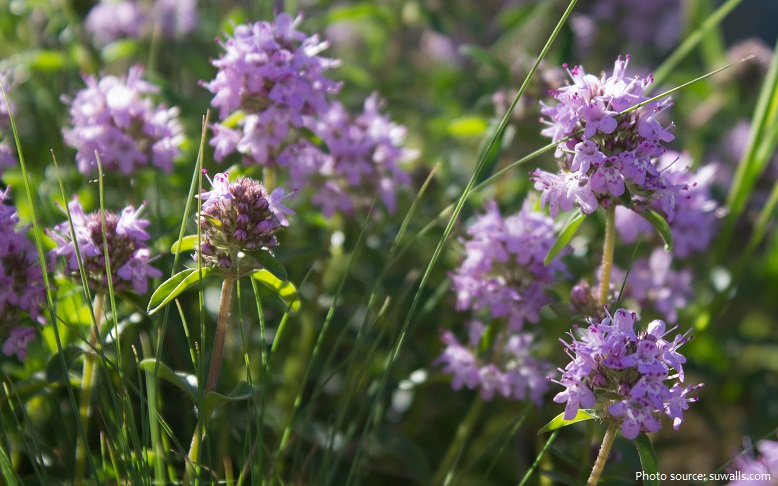
The origins of thyme can be traced back to ancient societies throughout the Mediterranean, though it’s now grown and cooked with all over the world.
There is evidence of ancient Egyptians utilizing thyme’s powerful antiseptic properties in embalming rituals.
The ancient Greeks used it in their baths and burnt it as incense in their temples, believing it was a source of courage.
In the Roman era, it was widely held that eating thyme either before or during a meal would protect you from poison – this made the herb a particular favorite of the emperors. It was even said that a bath in warm water liberally dosed with thyme could stop the effects of poison after it was inadvertently consumed.
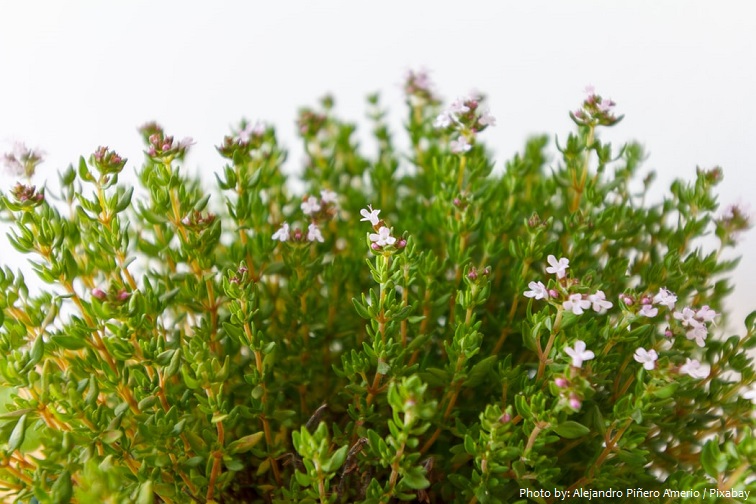
The spread of thyme throughout Europe was thought to be due to the Romans, as they used it to purify their rooms and to “give an aromatic flavour to cheese and liqueurs”.
In the European Middle Ages, the herb was placed beneath pillows to aid sleep and ward off nightmares. In this period, women also often gave knights and warriors gifts that included thyme leaves, as it was
believed to bring courage to the bearer.
During the Black Death in the Middle Ages, thyme’s active antiseptic compound, thymol, was thought to protect from infection and was used to treat skin lesions caused by the disease. Later, thyme was considered an indication of the presence of mythical fairies. Throughout its documented history, thyme has been incorporated into food preservation methods, owing to its pleasant herbal flavor and antibacterial properties.
Thyme was also used as incense and placed on coffins during funerals, as it was supposed to assure passage into the next life.
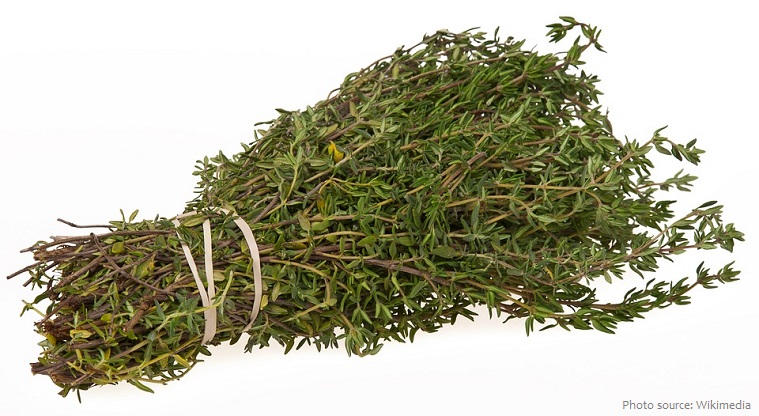
It was probably introduced to North America by European colonists, and has escaped cultivation.
Today, thyme is cultivated throughout the world.
Thyme is used in a number of cuisines, including European, British, Mediterranean, African, Latin and Central American, regional American, and the Caribbean.
It is used to flavour a wide range of foods, including poultry, stuffings, fish, eggs, meats, sauces, soups, vegetables, cheeses, and pastas.
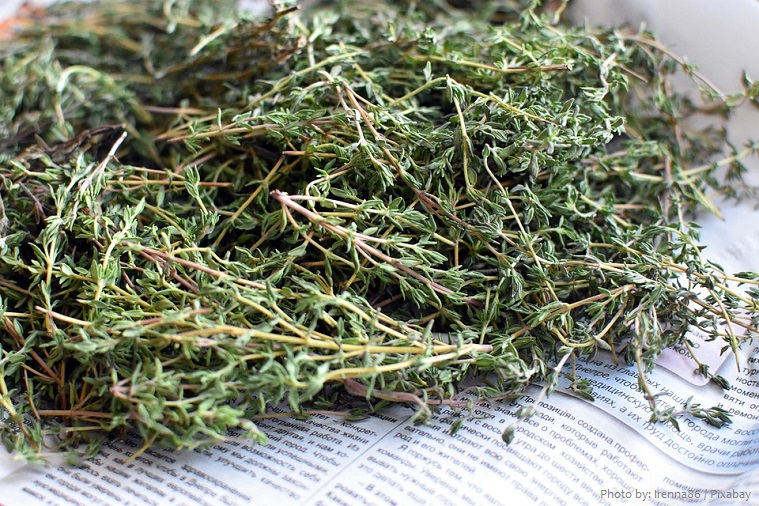
Thyme can also be used to add flavor and depth to marinades and cocktail elements.
The name of the genus of fish Thymallus, first given to the grayling, originates from the faint smell of thyme that emanates from the flesh.
Common thyme and lemon thyme are the varieties most often used in cooking.
Thyme is sold both fresh and dried. While summer-seasonal, fresh greenhouse thyme is often available year-round.
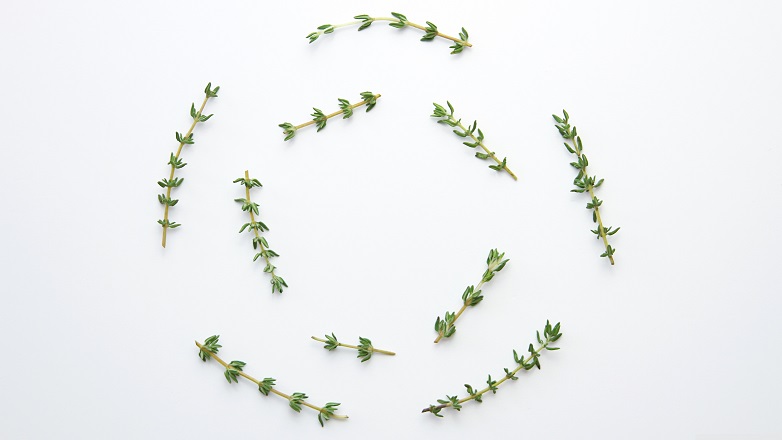
While dried thyme possesses a nearly identical flavor profile to its fresh counterpart, it typically needs to be rehydrated—whether on its own or during the cooking process (i.e. adding to a braised dish or bread dough)—in order to display its full range. Dried thyme leaves can be substituted for
fresh in any application, but use one-third as much dried thyme as you would use fresh.
It is one of the herbs used to flavour Benedictine liqueur and is a characteristic seasoning in the traditional English dish jugged hare.
The principal component of its essential oil is thymol, or thyme camphor, which is used in the manufacture of perfumes and dentifrices. Some thyme varieties are grown as ornamental ground covers.
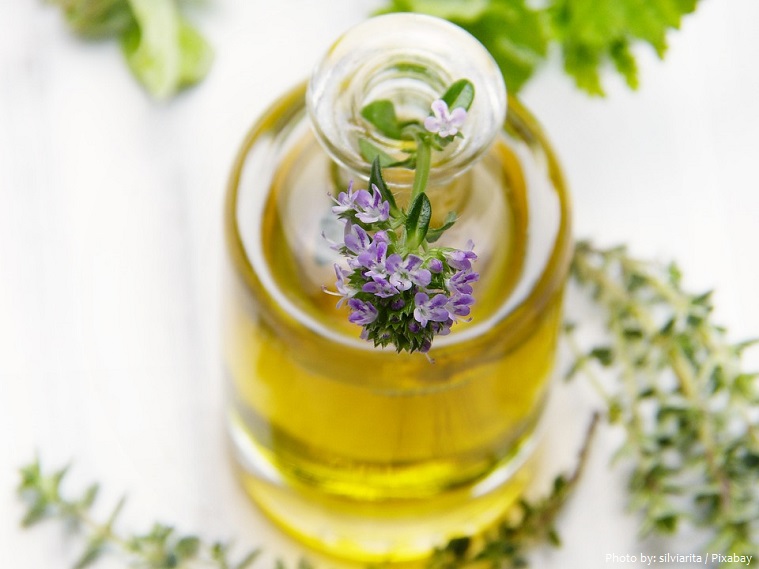
Thyme contains a variety of minerals and vitamins that promote good health. It is full of vitamin C for immune support, potassium for healthy cells, and manganese for bone development and blood clotting.
Thyme is also beneficial in aromatherapy, providing relief from respiratory ailments and stimulating immune and circulatory responses.
A tea made by infusing the herb in water can be used for cough and bronchitis.
Some thyme varieties are grown as ornamental ground covers.